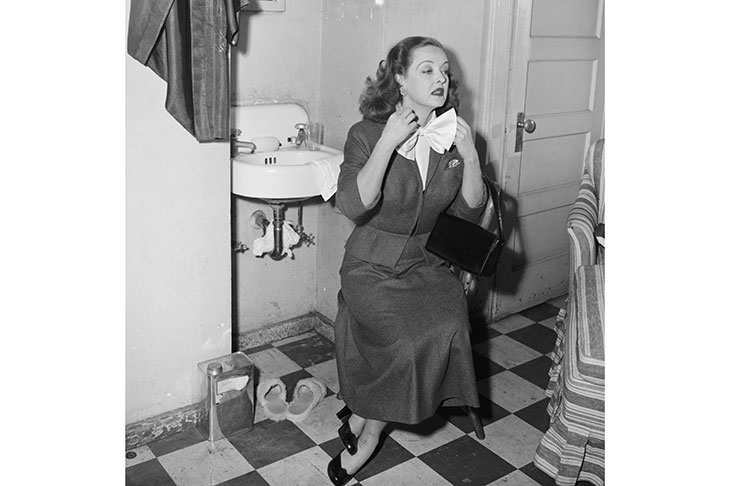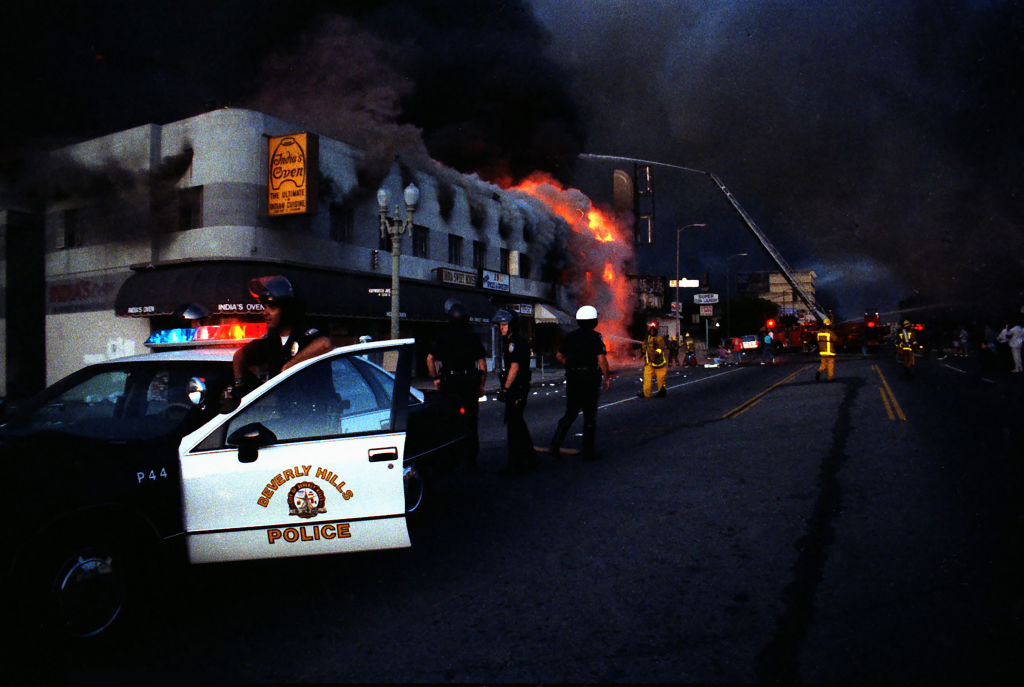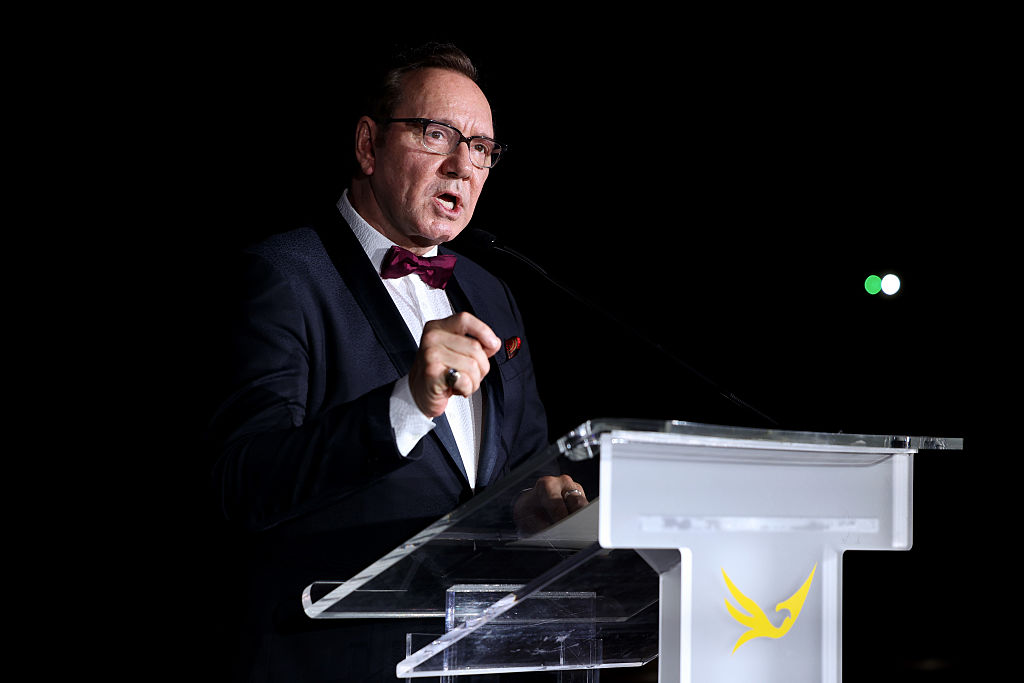In 1950, Bette Davis had a string of recent flops behind her. She was 41, married to an embarrassing twerp (her third husband), and her career was spiraling above the plughole. She only got the lead part in All About Eve when Claudette Colbert — who was all signed up — ruptured a disc while doing a rape scene on another film. The story goes that with Colbert shrieking in traction, the producer Darryl Zanuck, who hadn’t spoken to Davis since using the words ‘You’ll never work in this town again’, was obliged to offer her the part. It didn’t take much. No sane actress could resist Joseph L. Mankiewicz’s fabulous script with its sophisticated wit and refreshing cynicism. Davis literally kissed the script and leapt at the part of the Broadway diva Margo Channing. It did her libido a power of good. She had a thing about men with hairy backs and immediately had an affair with her on-screen partner, the hirsute Gary Merrill, who later said he spent three days walking around the set trying to hide a permanent erection.
The 1950 film is soon to open as a West End play. The stage version is being directed by the Belgian theatre maestro Ivo van Hove, who has done other films for the stage — notably last year’s version of Network (1976) with Bryan Cranston and Visconti’s Osessione (1943) with Jude Law. Van Hove’s cannibalizing method is to use loads of digital technology — lots of live camera stuff — to make a hybrid theatre (or ‘thea-tuh’ as Bette Davis says it) out of deconstruction and reassembly. The statuesque Gillian Anderson is bravely taking on the Bette Davis part, Downton’s Lily James is Eve.
The film’s story is one of usurpation. It was based on a short story, first printed in Cosmopolitan magazine, by Mary Orr that was in turn inspired by events that actually happened to the German actress Elisabeth Bergner. Eve Harrington is a young fan who hangs about the stage door of the theatre where the great Margo Channing is starring in a new play. Eve worms her way into the star’s circle, becomes her secretary, her understudy and finally her rival. She even tries to steal her fiancé Bill. Anne Baxter was chosen for the part for what was charmingly called her ‘bitch virtuosity’. She has been criticized for making Eve too obviously insincere and over-flattering. But Mankiewicz (who also directed) rightly felt that when hearing nice things about ourselves we none of us look a gift horse in the mouth.
Celeste Holm played Margo’s sweet best friend. On day one, Holm foolishly said ‘good morning’ to Miss Davis. ‘Oh shit, good manners,’ snorted Bette at the pedigree actress. Holm never spoke to her again. But the film soon fell into place and the cast worked like demons, sensing they had a real hit on their hands.
Mankiewicz brilliantly summed up Margo as a ‘woman who treated her mink coat like a poncho’. Davis didn’t have to act: she was Margo. ‘I am sure I have been uncompromising, peppery, intractable, monomaniacal, tactless, volatile and oft-times disagreeable,’ she admitted in her riveting autobiography. Margo famously announces in the film, over her fifth cocktail, ‘Fasten your seatbelts, it’s going to be a bumpy night,’ to the delight of drag queens and impersonators ever since.
One of the many lasting joys of the film is its depiction of the theatre critic — or an idea of a theatre critic. He’s the film’s chief narrator, a double-breasted reptile called Addison DeWitt, played by George Sanders, the caddish British actor with that super-suave voice. Undeceived by Eve, he snaps at her: ‘I’m nobody’s fool, least of all yours.’ It has to be said that Addison’s acerbic wit has dated a bit; today he sounds more pompous than lethal. But he uses his cigarette holder to great effect and he won an Oscar for the part. ‘If you covered him with garbage/ George Sanders would still have style,’ rightly sang the Kinks.
It could be said that the film is all about the treacherous shoals of showbiz; but it’s also a film about female loneliness and a woman’s fear of aging. Bette Davis poured into her performance her bitter resentment of the prevailing film culture where ugly men — mostly part-time rapists — decided which career to terminate in middle age, which to continue. It makes the film exceptionally pertinent. Davis certainly knew all about what it takes to become top cat, having to make crap films, and having to settle for a kind of loving, never knowing real contentment. She brings to the film all of that, plus a terrific sense of fun.
She was accused of sending up Tallulah Bankhead because she adopted a similar huskiness for the part of Margo. But it wasn’t imitation. She was husky because she had spent the night before the first day of shooting screaming at her husband until a blood vessel burst in her throat. The real role model for Margo, according to the scholarly Mankiewicz, was the great Peg Woffington (1720–60), the fiery Irish actress who made her name in Georgian London and who dated and dumped David Garrick.
Marilyn Monroe is also in the film, in her first speaking part. She plays the dumb blonde, clad in white fur, on Addison’s arm. She totally dominates her scene, then walks towards the camera, her breasts homing toward us like parallel missiles. Monroe may only have a few lines, but not even Bette Davis matches her for sheer screen wattage.
The film was nominated for 14 Oscars, including a record five for women — Bette Davis, Celeste Holm, Ann Baxter, editor Barbara McLean and Thelma Ritter (who played, quite beautifully, Margo’s gruff assistant). It was an achievement only ever rivaled by Titanic with its babyish script and obscene budget.
As for Bette, her feuding days were far from behind her. In 1962, looking like Barbara Cartland on a bad night, she made the notorious film What Ever Happened to Baby Jane? Co-starring was her arch-enemy, Joan Crawford. At the post-awards party that year, the aging star sat at her table, took a tumbler and filled it with whisky, right to the top. ‘This is for La Belle Crawford,’ she said. ‘But she doesn’t drink scotch,’ said her companion. Bette replied: ‘I don’t care what she drinks. This is going in her fucking face.’
This article was originally published in The Spectator magazine.

























